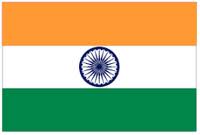Editor’s Note: Dr. Ruchi Dass is a renowned expert in the field of mHealth. She is an author, market researcher and business strategist on a large variety of plans and projects in India related to mHealth and Telemedicine. Dr Dass has represented India’s efforts towards bridging the economic and digital divide in Healthcare internationally.
Editor’s Note: Dr. Ruchi Dass is a renowned expert in the field of mHealth. She is an author, market researcher and business strategist on a large variety of plans and projects in India related to mHealth and Telemedicine. Dr Dass has represented India’s efforts towards bridging the economic and digital divide in Healthcare internationally. She sits on several advisory boards of leading mHealth companies and lectures on mHealth internationally. This post is from Dr Dass’s blog HealthCare India. Please also see Part II of this week’s Mobile Health Around the Globe which is an exclusive interview with Dr Dass in which she goes into greater detail about the future of mHealth.

Mobile Health is going to be a 3000 crore (editor’s note: about 557 million dollar) market in India by 2017. (Source PwC). M-health (use of mobile phones) and E-health are all set to make an entry into India’s primary health centres (PHCs) and sub-centres as the health ministry plans to go hi-tech. Healthcare industry is expected to show a strong growth of 23% per annum to become a US$ 77 billion industry by 2012. One of the largest sector in terms of revenue and employment has grown at 9.3% per annum between 2000-2009 with a current size at par with fastest growing developing country like China, Brazil and Mexico.Driven by various catalysts such as increasing population, rising income levels, changing demographics and illness profile with a shift from chronic to life style diseases, healthcare industry is expected to move to levels of US$ 77 billion in next 3 years. (Source: ASSOCHAM).
Empowering rural India is of utmost importance and the government needs to do so by provisioning for broadband penetration and financial inclusion. Access to quality health care is another key to achieving rural empowerment. The budget for this segment was raised marginally last year and it would be good to have an allocation for rural health care programs with provisions for technology that would help modernize this sector to expand its reach through remote healthcare solutions and telemedicine.
Furthermore, the government announced a big budget campaign ‘Swabhimaan’ in the budget last year to promote banking and provide services to about 20,000 villages. In order to meet this goal, the budget this year too would need to make provisions accordingly. The steering committee on health said that in the 12th plan (2012-17), all district hospitals would be linked to leading tertiary care centres through telemedicine, Skype and similar audio visual media. M-health will be used to speed up transmission of data. Disease surveillance will be put on a GIS platform.
Disease surveillance based on reporting by providers and clinical laboratories (public and private) to detect and act on disease outbreaks and epidemics would be an integral component of the system.India will also put in place a Citizen Health Information System (CHIS) – a biometric based health information system which will constantly update health record of every citizen-family. The system will incorporate registration of births, deaths and cause of death. Maternal and infant death reviews, nutrition surveillance, particularly among under-six children andwomen, service delivery in the public health system, hospital information service besides improving access of public to their own health information and medical records would be the primary function of the CHIS.
Economies of Indian states can grow 1.08 per cent faster with every 10 per cent increase in Internet and broadband connections, says a study released by Indian Council for Research on International Economic Relations (ICRIER). Consequently, for every 10 per cent increase in Internet and broadband penetration, India could potentially add USD 17 billion to the Gross Domestic Product (GDP). Also as per a report by HealthCursor, the tele-density in urban areas in India is almost 100 percent while in the rural areas, it is 37 percent. The pervasiveness of mhealth and ehealth (Commnity based broadband now available) platforms will be harnessed in the MDG and National Health plans in India.
To read other posts in this exclusive ongoing series, please visit the Mobile Health Around the Globe main page.
And if you have a Mobile Health Around the Globe story to tell, please email me at joan@socialmediatoday.com










